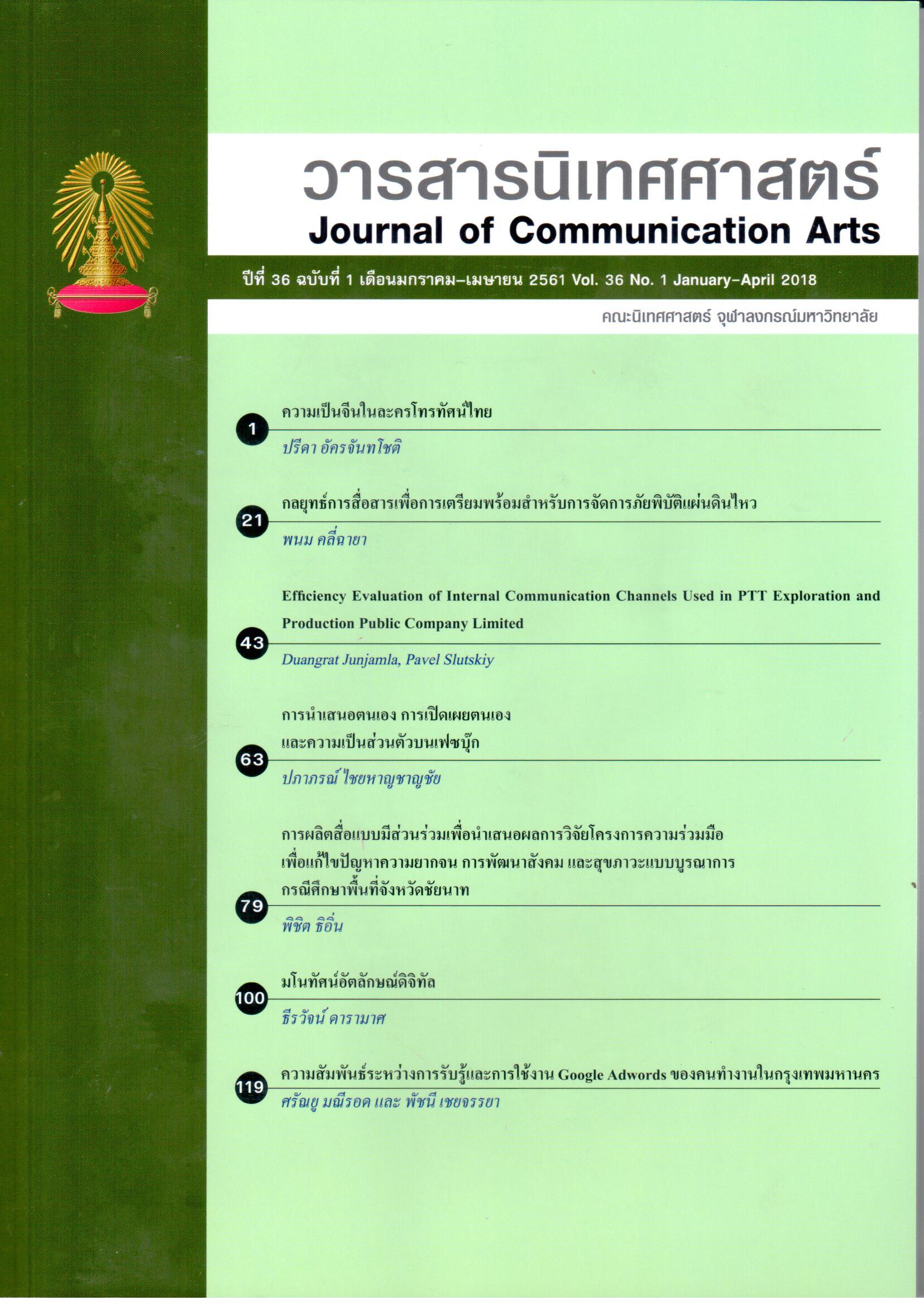The concept of digital identity
Main Article Content
Abstract
Digital Identity was aware mainly governmental missions. In the age of human rely on digital networks to communicate daily either with entertainment, social communication, education, and transportation. The effect happens to such as social economy, law, and public policy. These are beneficial to medical, border, crime protection/investigation, and terrorism. Digital Identity Management is internationally a main concern to OECD panels supports the topic to persuadethe development of countries’ digital economy and internet society.
Future of digital world will be importantly at identity verification standard whereby the concept of digital identity may be a great starting point ofprinciples togather and synthesize data ontoexistence of networks which identitydata mostly bean unstructured and keptimplicitlyin those user’scommunicating behaviors.
There areseveral social theories which researchers may choose to use appropriately. In this article, the writer reviewed many tools comparatively and proposed a concept of digital identity from a work of Pierre Bourdieu named the symbolic capital. It is founded that the application is interesting and resultingdifferently from other methodologies. The model indicates power of relationship and communication between owners of digital identities and audiences instead the shift of types of capital.
Article Details
References
863240193?accountid=42455
Bernstein, G. (2004). Accomodating Technological Innovation- Identity, Genetic Testing and the Internet. Vanderbilt Law Review, 57(3), 78.
Cole, D. D. (2016). AFTER SNOWDEN: REGULATING TECHNOLOGY-AIDED SURVEILLANCE IN THE DIGITAL AGE. Capital University Law Review, 44(4), 677-691.
Donath, J. S. (1998). COMMUNITIES IN CYBERSPACE - Identity and deception in the virtual community. In P. a. S. Kollock (Ed.), Communities in Cyberspace. (pp. 26). LONDON: Routledge.
Foucault, M. (2011). ร่างกายใต้บงการ ปฐมบทแห่งอำนาจในวิถีสมัยใหม่ (ท. โภคธรรม, Trans.). กรุงเทพฯ: คบไฟ.
Halperin, R., & Backhouse, J. (2009). A Roadmap for Research on Identity in The Information Society. Identity in The Information Society Journal, 1(1), 15.
Hildebrandt, M., Koops, B.-J., & Vries, K. d. (2008). “D7.14a: Where Idem-Identity meets Ipse-Identity. Conceptual Explorations”. Retrieved from http://www.fidis.net/resources/deliverables/
LEBOEUF, K. (2016, 29 February 2016). 2016 UPDATE: WHAT HAPPENS IN ONE INTERNET MINUTE? Retrieved from http://www.excelacom.com/resources/
blog/2016-update-what-happens-in-one-internet-minute
Macfadyen, L. P. (2006). The Prospects for Identity and Community in Cyberspace. In C. Ghaoui (Ed.), Encyclopedia of Human Computer Interaction (pp. 471-478).
Nabeth, T. (2005). Understanding the Identity Concept in the Context of Digital Social Environments. FIDIS.
OECD. (2008). Shaping Policies for the Future of the internet Economy. Paris. https://search.proquest.com/docview/189839669?accountid=42455
OECD. (2009). The Role of Digital Identity Management in the Internet Economy: A PRIMER FOR POLICY MAKERS. Retrieved from Paris: https://search.proquest.
com/docview/189860426?accountid=42455
OECD. (2011). Digital Identity Management for Natural Persons: ENABLING INNOVATION AND TRUST IN THE INTERNET ECONOMY - GUIDANCE FOR GOVERNMENT POLICY MAKERS. Retrieved from Paris: https://search.
proquest.com/docview/924026916?accountid=42455
Rannenberg, K., Royer, D., & Deuker, A. (2009). The Future of Identity in the Information Society Challenges and Opportunities. Retrieved from
Rodrigues, R. E. (2011). Revisiting the legal regulation of digital identity in the light of global implementation and local difference. (10033627 Ph.D.), The University of Edinburgh (United Kingdom), Ann Arbor. Retrieved from https://search.proquest.com/docview/1774234438?accountid=42455 ProQuest Dissertations & Theses Global database.
Thaipbs. (2015, 06 February 2015). ปอท.จับกุมแก๊งโรแมนส์สแกรมหลอกตีสนิทหญิงไทยให้โอนเงิน. Retrieved from http://news.thaipbs.or.th/ปอท.จับกุมเครือข่ายโรแมนส์สแกรมหลอกตีสนิทหญิงไทยให้โอนเงิน
Turkle, S. (1997). Multiple Subjectivity and Virtual Community at the End of the Freudian Century. Sociological Inquiry, 67(1), 72-84.
Wilson, S. M., & Peterson, L. C. (2002). THE ANTHROPOLOGY OF ONLINE COMMUNITIES. Reviews in advance, 449-467. doi:10.1146/annurev.anthro.31.
040402.085436
Zwart, M. d., & Lindsay, D. (2012). My Self, My Avatar, My Rights? Avatar Identity in Social Virtual Worlds. 85, 20.
จันทนา ทองประยูร. (2009). การหลอมรวม หนังสือพิมพ์ กับ สื่อออนไลน์. วารสารนิเทศศาสตร์ มหาวิทยาลัยสุโขทัยธรรมาธิราช, 1(1), 14.
เธียรชัย อิศรเดช. (2009). อัตลักษณ์กับสื่อ : ตัวตนกับการสื่อสาร. นิเทศศาสตรปริทัศน์, 13(1), 15.
นพพร ประชากุล, &ชนิดา เสงี่ยมไพศาลสุข. (2007). เศรษฐกิจของทรัพย์สินเชิงสัญลักษณ์: กรุงเทพฯ : โครงการจัดพิมพ์คบไฟ, 2550 [2007] พิมพ์ครั้งแรก.
นฤมล คงชื่นสิน. (2013). การปรับตัวของนิตยสารในยุคหลอมรวมสื่อ (Media Convergence) : กรณีศึกษา นิตยสารตกแต่งบ้าน my home. (มหาบัณฑิต), มหาวิทยาลัยธรรมศาสตร์,
ปกรณ์ สิงห์สุริยา, คงกฤช ไตรยวงศ์, &รชฎ สาตราวุธ. (2013). เรื่องเล่า อัตลักษณ์ และความยุติธรรม ในปรัชญาของ ปอล ริเกอร์: สำนักพิมพ์คบไฟ.
รอฮีม ปรามาท. (2011). โลกเครือข่าย อนาคตของอินเตอร์เน็ต. Bangkok: Post Books.


